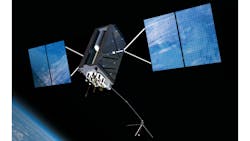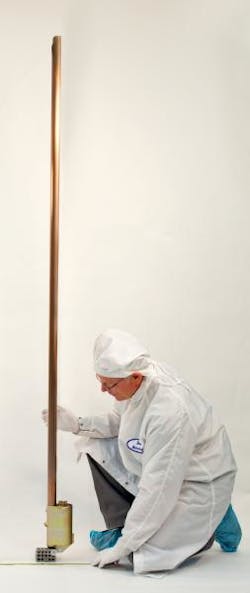JIB Antennas Will Form Array for GPS III Satellites
The GPS III program’s main objective is to replace dated GPS satellites in an affordable way while improving their capabilities. To meet the demands of military, commercial, and civilian users, the next-generation satellites are said to deliver three times better accuracy and up to eight times improved anti-jamming capabilities compared to previous systems. Key to these satellite systems are the 32 self-deploying, monopole JIB antennas that were recently delivered for use in the third through sixth GPS III satellites.
Once they are installed, each GPS III satellite will have eight JIB antennas. Those antennas will deploy to form an RF antenna array. The JIB antennas are storable, tubular, extendible-member monopoles that self-deploy in about 200 ms using stored spring energy. Each antenna is stowed in a compact package and comes in diameters from 0.25 to 2 in. for impedance matching and in lengths ranging from 12 in. to 25 ft.
These features make the antennas suitable for other applications, such as CubeSats and very-high-frequency (VHF) and ultra-high-frequency (UHF) configurations. Sixteen more JIB antennas are set to be delivered by Northrop Grumman Astro Aerospace in early 2014. The company has so far delivered more than 1000 JIB assemblies for GPS IIF, GPS IIR, and GPS III spacecraft. The antennas will help the satellites carry a new civil signal that is designed to be interoperable with other international global navigation satellite systems. In doing so, they promise to enhance civilian connectivity.
About the Author
Iliza Sokol
Associate Digital Editor
Iliza joined the Penton Media group in 2013 after graduating from the Fashion Institute of Technology with a BS in Advertising and Marketing Communications. Prior to joining the staff, she worked at NYLON Magazine and a ghostwriting firm based in New York.


